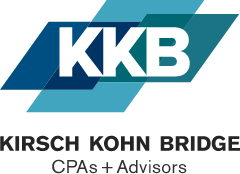Insights
How to Account for Change Orders
December 23rd, 2021/Advisory
Last-minute changes to contracts can be frustrating. But, if managed properly, they can sometimes provide an opportunity to boost profits. Here are ways construction companies, engineering firms, software developers and other businesses that enter into long-term contracts with customers can better track change orders, account for them properly on their financial statements and use them to enhance the bottom line.
Common mistakes
Customers can sometimes change their minds after signing a contract, but before work is completed. To keep projects on schedule, it’s not unusual for contractors to begin out-of-scope work before a change order is approved. But failure to properly track and account for the costs and revenue associated with this work can have a negative impact on a business’s financial statements.
Suppose, for example, that a contractor records costs attributable to a change order in total incurred job costs to date, without making a corresponding adjustment to the total contract price and total estimated contract costs. To a lender or surety, this may indicate excessive underbilling’s.
On the other hand, profit fade can occur if contractors are overly optimistic about their chances of receiving change order revenue. If a contractor increases the total contract price based on out-of-scope work but is unable to secure change order approval, profits may fade as the job progresses. This can also shake the confidence of financial statement users.
3 categories
Without proper tracking procedures, contractors may inadvertently forget to charge customers for change orders in accordance with the terms of agreement. Change orders generally fall into these three categories:
1. Approved. For this category, it’s appropriate to adjust incurred costs, total estimated costs and the total contract price. Depending on the contract’s change-order provisions, this may increase the business’s estimated gross profits.
2. Unpriced. If the parties agree on the scope of work but leave negotiations on price for later, the accounting treatment depends on the probability that the contractor will recover its costs. If it’s not probable, change order costs are treated as costs of contract performance in the period during which they’re incurred, and the contract price is not adjusted. As a result, the contractor’s estimated gross profit decreases.
If it’s probable that the costs will be recovered through a contract price adjustment, the contractor can either:
- Defer the costs until the parties have agreed on the change in contract price, or
- Treat them as costs of contract performance in the period incurred and increase the contract price to the extent of the costs incurred (resulting in no change in estimated gross profit).
To determine whether recovery is probable, a contractor should consider its past experience in negotiating change orders and other factors. If it’s probable that the contract price will be increased by an amount that exceeds the costs incurred (increasing estimated gross profit), the contractor may recognize increased revenue — provided realization of that revenue is “assured beyond a reasonable doubt.”
3. Unapproved. These should be treated as claims. It’s appropriate to recognize additional contract revenue only if, under guidance provided in the accounting rules, it’s probable that a claim will generate such revenue and the amount can be reliably estimated.
We can help
Accounting for change orders under the percentage-of-completion method of accounting can sometimes be confusing. Contact us for help managing your company’s change order procedures and improving the accuracy and transparency of your financial statements.
© 2021
TAGS: Advisory


